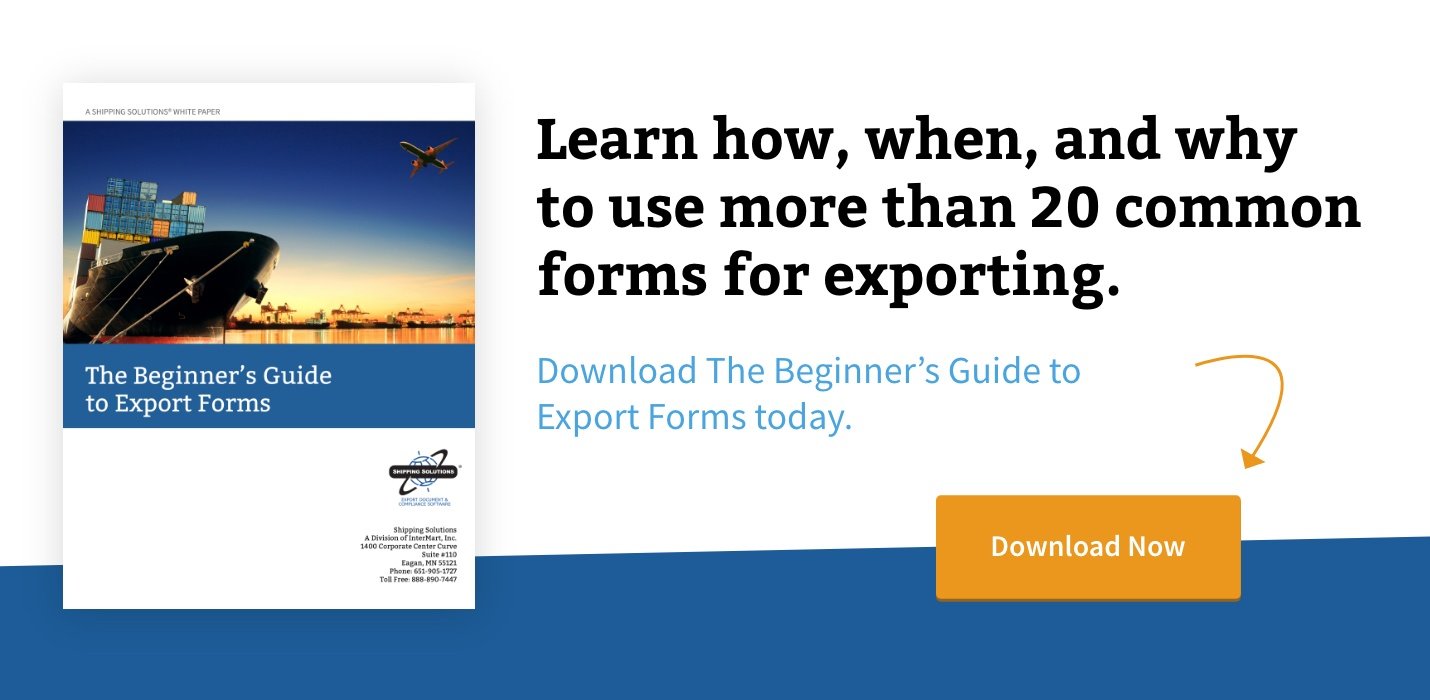The International Trade Blog International Sales & Marketing
You Asked, We Answered: 6 Big Export Documentation Questions
On: July 8, 2015 | By:  David Noah |
4 min. read
David Noah |
4 min. read
 “I was wondering the same thing!”
“I was wondering the same thing!”
How many times have you stumbled across a great, thorough answer to a question and felt like saying that out loud? I understand the sense of relief you feel when you get a complete, honest answer to your exporting questions.
Our office gets emails about common exporting “hot topics,” often, so we thought it might be helpful to answer six of these questions here. Take a look!
1. What do I put in columns 7, 8 and 9 on the NAFTA Certificate of Origin?
If you’re asking this question, you’re doing it wrong. Instead, you should reassess whether you can and should be providing the NAFTA Certificate. For starters, you need to know that NAFTA is optional, and you may not need to claim NAFTA preference in order to get the best rates for your exports.
2. Can I use a NAFTA Certificate of Origin for my shipments to China?
The answer to this question is absolutely not. The NAFTA COO may be a commonly used form, but it is for use only in North America. (Although I used China in the example, this is one question we hear several country-specific versions of.) If you’re wondering what kind of form you should use, it will vary depending on where, what and how you are shipping. Cathy Petersen’s article, Using the Right Certificate of Origin Form for Your Export Shipments, can help you determine which COO is the appropriate choice for your export.
3. When do we have to include the antidiversion statement on our invoices?
Companies almost always need to include the antidiversion statement on their invoices. According to A Basic Guide To Exporting, the antidiversion clause helps ensure that U.S. exports go only to legally authorized destinations. This is why the government requires a destination control statement on shipping documents.
Under this requirement, the commercial invoice and bill of lading (or air waybill) for nearly all commercial shipments leaving the U.S. must display a statement notifying the carrier and all foreign parties that the U.S. material has been approved for export only to certain destinations, and may not be diverted contrary to U.S. law.
You can find out more about the destination control statement in our article, What Is the Destination Control Statement and Why Should It Be on Your Commercial Invoice?. Exceptions to the use of the destination control statement are listed in Part 758.6 of the Export Administration Regulations (EAR). The U.S. Department of Commerce, an attorney, or a freight forwarder can help you determine the appropriate statement you need to provide.
4. Why do only six Schedule B digits appear on the commercial invoice?
Here’s my brief answer: There are six Schedule B digits on the commercial invoice because six digits are common across almost all countries. The remaining (usually four) digits are unique to each individual country. When you fill out your export documentation, we recommend using just the six digits to prevent confusion and errors that could cost you (Click here to see a sample of a completed commercial invoice). However, you do have an option for including the 10-digit code—just make sure you do it correctly. Take a look at the complete answer in this article, What's the Difference between a Schedule B Code and an HS Number?
5. Where do I find the correct Schedule B code for my products?
You have several good options for finding the correct Schedule B Code for your products.
- Plug in your information to our Product Classification Wizard to find the correct Schedule B Code for your products. With this tool, you can also find the correct Harmonized System (HS) and Export Control Classification Number (ECCN) numbers!
- Use the Schedule B Search Engine tool on the Census website.
- Browse through online chapters of the Schedule B Book.
6. What documents do I need to provide for my letter of credit?
To find out what documents you need to provide for your letter of credit, you need to talk to your bank. Don’t guess and get it wrong—if you must use a letter of credit, get it right, and take the time to speak with experts in the bank’s international department. They will help you identify the exact documentation you need to provide for your specific situation.
We know you have a lot of forms to understand, and you may not know of any resources you can trust to help you get a solid understanding of every document. In our Beginner’s Guide To Export Documents, you can find out everything you need to know about these documents—including how they’re used, what they require, and who needs to use them—and then you can download and use the forms for free!

About the Author: David Noah
David Noah is the founder and president of Shipping Solutions, a software company that develops and sells export documentation and compliance software targeted at U.S. companies that export. David is a frequent speaker on export documentation and compliance issues and has published several articles on the topic.


